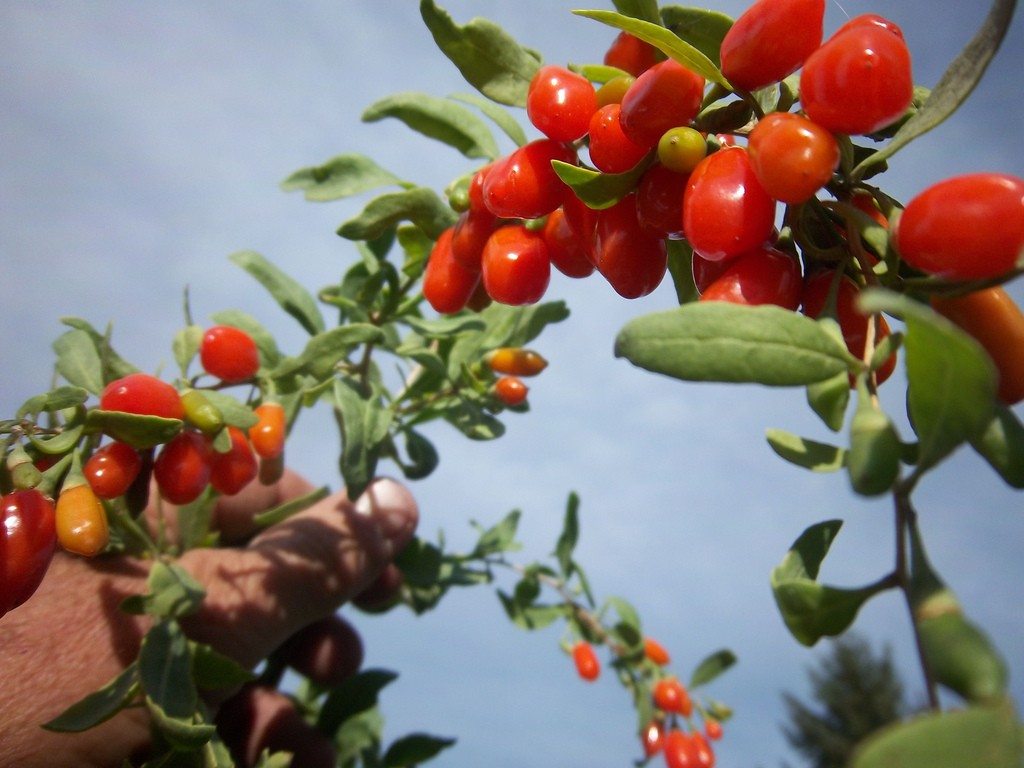Goji Berry Growing Info: Learn About How To Grow Goji Berries


Goji berry makes a popular juice, thought to possess super nutrients with vast medical and health potential. The benefits of gogi berries are numerous and available to the home gardener. What are goji berries and how do you grow them? USDA plant hardiness zones 5 to 9 provide the best climates for growing gogi berry plants.
What are Gogi Berries?
Gogi berries are in the nightshade family of plants, which include tomatoes and peppers. The berries grow on shrubs of 3 to 5 feet (1-1.5 m.) in height, with long arching stems. These berries spring from bright purple, funnel-shaped flowers. Orange globular berries then form in late season. The bush is native to Asia, but it is also found wild in Russia, China, Turkey, and Japan. Berries are a brilliant orange-red and oval shaped. They are dried for medicinal purposes to a dark shriveled fruit.
Goji Berry Info
It is important to weigh nutritional and medicinal goji berry info so you can make an informed decision for yourself and your family. The benefits of goji berries are purported to be numerous and they are part of ancient Eastern medicine practices. The berries may help immune function, alleviate menopausal symptoms, increase blood cell production, and even regulate blood pressure. Some think it can also diminish lung, liver, and kidney deficiencies. The plant is reported to have anti-oxidant properties, anti-aging capability, and even cure a wide range of diseases as well. Most of these claims are not medically proven, however. Even if the plant does not achieve all these claims, goji berry planting provides an attractive hedge or climbing plant. It is easy to train to a trellis and can be pruned to keep its rangy growth in check.
Growing Goji Berry Plants
Growing goji berry plants is easy. The plants need well-drained soil with pH levels between 6.8 and 8.1. Check the drainage and add sand or compost to improve the texture of the soil if necessary. Bare root plants are the most common way to start gogi berries in your garden. Early spring is the best time for gogi berry planting. This is when the shrub is dormant and better tolerates disturbance. Bare root shrubs need to go into the ground as soon as you get them. Soak the roots in water and plant in a sunny location. Spread out the roots and push soil in and around the roots. Keep the soil moderately moist for the first few months or until you see new growth sprouting. Spread mulch around the base of the plant to reduce weeds and conserve moisture. Thereafter, allow the soil to dry out in the top few inches (8 cm.) before watering again. You can also start plants from seed. Use fresh seeds that have been cleaned and are free of fruit pulp. Start seeds indoors in peat pots and plant outdoors in spring when they are one year old. Expect fruits in about three years from the time of sowing.
Sign up for the Gardening Know How newsletter today and receive a free copy of our e-book "How to Grow Delicious Tomatoes".

Bonnie Grant is a professional landscaper with a Certification in Urban Gardening. She has been gardening and writing for 15 years. A former professional chef, she has a passion for edible landscaping.